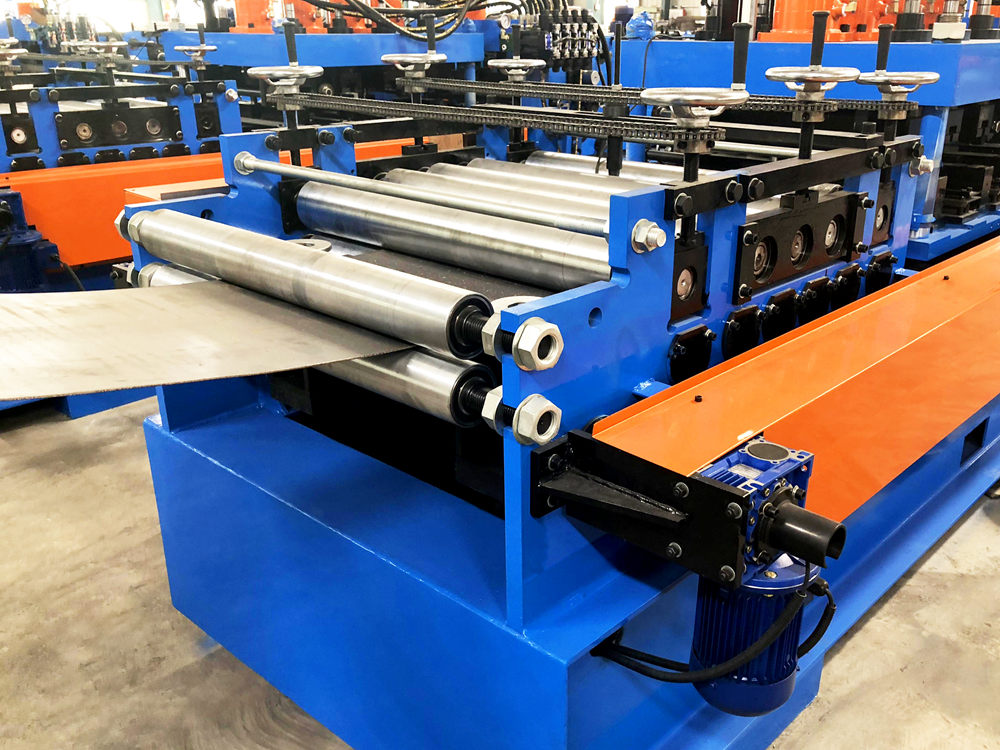
The Rise of Automatic Steel Frame Manufacturing A Focus on Roll Forming Technology
The construction industry has witnessed a substantial evolution in methods and materials over the years. Among these innovations, the automatic steel frame manufacturing process stands out due to its efficiency and versatility. As builders and architects seek sustainable, reliable, and quick-to-install solutions, steel frames—particularly those that utilize advanced technology like roll forming machines—are becoming increasingly pivotal.
Understanding Steel Frame Construction
Steel framing involves the use of steel columns, beams, and steel studs to create the structure of a building. This method offers numerous advantages over traditional wood framing, including enhanced durability, increased strength, and resistance to termites and rot. Moreover, the lightweight nature of steel does not compromise structural integrity.
The use of steel frames is particularly beneficial in commercial construction, where large spans and open floor plans are often required. However, advancements in manufacturing processes, especially automatic roll forming technology, have made it more feasible for residential applications as well.
The Role of Automatic Roll Forming Machines
At the heart of modern steel frame manufacturing lies the roll forming machine. This sophisticated equipment is designed to fabricate steel components with precision and speed. It operates by continuously feeding flat steel sheets through a series of rollers, which progressively shape the metal into desired profiles, such as C-channels, tracks, and studs.
Automatic roll forming machines bring several distinct advantages to the manufacturing process
1. Efficiency These machines can produce large volumes of steel components with minimal operator intervention. This not only reduces labor costs but also shortens the production timeline, allowing for quicker project turnarounds.
2. Precision and Consistency The automated nature of roll forming ensures high accuracy in dimensions, which is crucial for maintaining structural integrity. This repeatability minimizes errors and ensures that each component meets exact specifications.
3. Customization Modern machines can be tailored to produce various profiles and dimensions, enabling manufacturers to cater to specific project requirements easily. This flexibility helps meet the increasing demand for bespoke solutions in construction.

4. Material Utilization Roll forming is known for its efficiency in material usage. By minimizing waste during production, manufacturers can operate more sustainably, which is increasingly important in today’s environmentally conscious market.
Applications of Steel Frame Components
Steel frame components produced by automatic roll forming machines are versatile and used in various construction applications. For instance
- Studs and Tracks Used to create internal walls in commercial and residential buildings. Their lightweight and strong nature supports drywall installations effectively. - Furring Members Employed for mounting drywall to ceilings and walls, enhancing opaqueness and insulation properties.
- C-Channels Often used as structural components in floors and ceilings, providing crucial support without adding excessive weight.
In addition to these, angle sections, and other custom profiles can be manufactured for specialized applications, from industrial buildings to more innovative architectural designs.
The Future of Steel Frame Construction
As the construction industry continues to evolve, the demand for quicker, cost-effective, and robust building solutions will drive further innovations in steel frame technology. The integration of automation—specifically through advanced roll forming machines—will enhance production capabilities, ensuring a steady supply of high-quality steel components.
Moreover, the rise of green building practices will likely push steel framing to the forefront, as it is recyclable and can contribute to energy-efficient designs. The ability to streamline production while maintaining material integrity positions automatic roll forming as a key player in the future of construction.
Conclusion
Automatic steel frame manufacturing, particularly through advanced roll forming technology, is revolutionizing how structures are built. By delivering efficiency, precision, and customization, these machines are not just transforming the construction process—they are shaping the future of the industry itself. As the sector embraces these innovations, the potential for growth and improvement in building techniques appears limitless. Whether for residential homes or sprawling commercial facilities, automatic steel frame solutions are set to play a crucial role in modern architecture and construction projects.